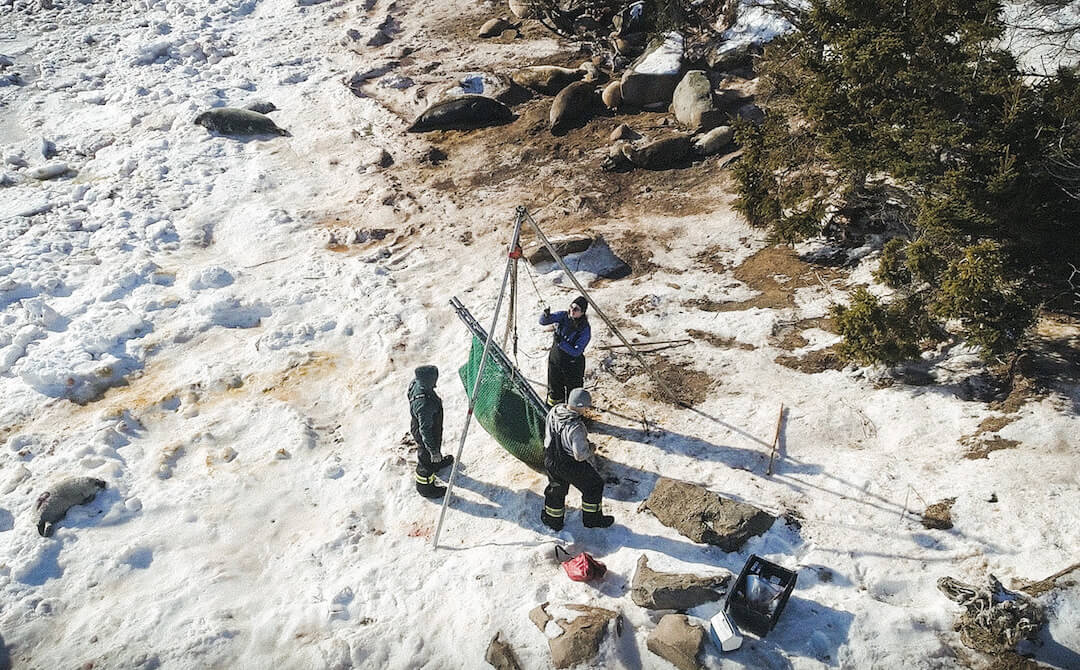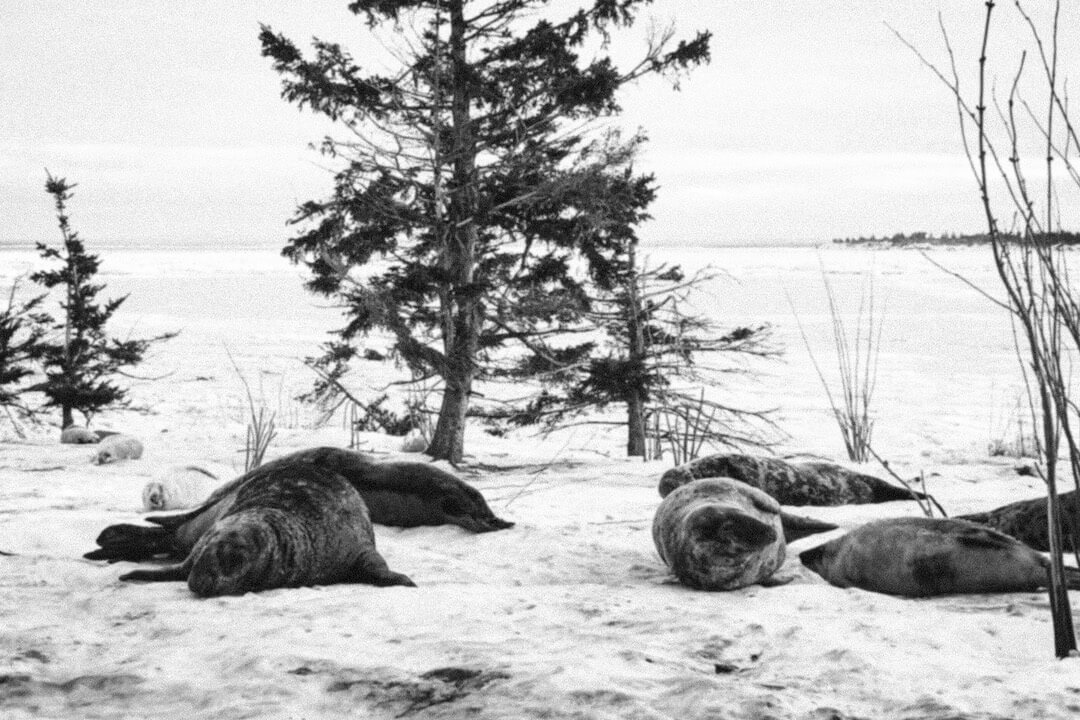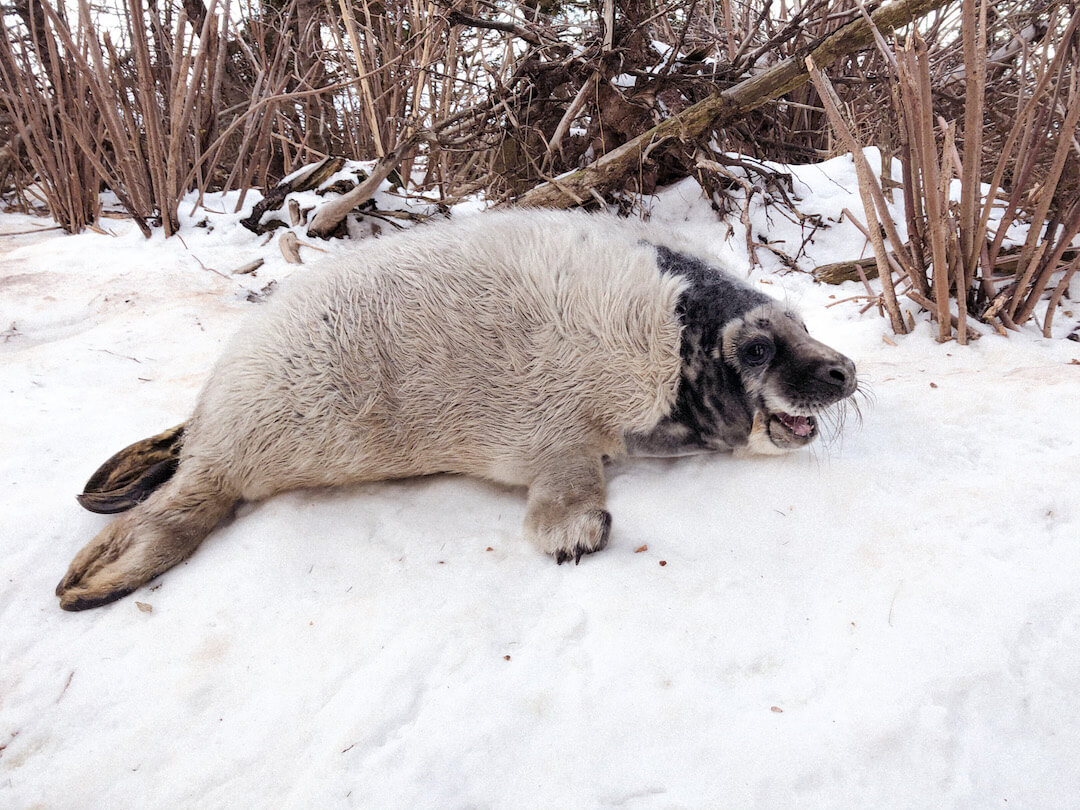6:30 a.m.: The alarm goes off, sounding the start of a new day in the field. I’m not in Tadoussac, but rather in Prince Edward Island for a training on methods for capturing seals, including newborns, or pups. As head of the intervention program of the Quebec Marine Mammal Emergency Response Network, I want to have all the necessary tools and knowledge at my disposal when it comes time to relocate a seal. For example, in summer, the Network is regularly contacted to report cases of seal harassment. Thanks to the training, we will be able to develop methods for relocating young seals so that they are not disturbed during the post-weaning period. This period is critical for them because they must learn to hunt to survive and are therefore more vulnerable.
Even if the training lasts just a few days, each step brings a dose of new knowledge. I join the rest of the team in the hall for lunch. The news is on TV, but everyone is rather contemplative. There’s just one thing on everyone’s mind right now: what kind of weather will we have today? It’s not just a question of sun, temperature and wind. Team leader Samuel is keeping a close eye on the aeronautical forecasts, as without descent flight conditions, we will be unable to reach the famous grey seal haulout where we will be working.
Harry, our pilot for the project, confirms that the day’s weather is expected to be favourable. Once we arrive at the hangar, we organize our equipment while waiting for our departure. A first team, consisting of Dr. Michelle Shero and Dr. Julian Dale, takes off for Saddle Island, off the coast of Nova Scotia. These US researchers are using a new approach that entails using drones to count seals and determine their morphometric parameters (size, weight). The information collected will give us a general idea of the state of health of the individuals under study. In the near future, this photogrammetric technique will be able to be used to estimate the size and weight of animals without having to handle them. One of the benefits will be the elimination of stress experienced by animals when they are captured.
Hearing the whirl of the approaching helicopter, we put on our flight suits. The island is about a 15-minute flight from Charlottetown Airport, a few kilometres off the coast of Nova Scotia. When I first spot the island, the seals appear no larger than slugs, but once we’re on the ground, we quickly realize how massive these animals are. Having given birth in early January, the females are still actively suckling their pups when we arrive. The little white “furballs” snuggle up serenely alongside their mothers. Young but already daring, they never miss an opportunity to bite whatever is within their perimeter. The nursing period lasts about 18 days, during which time the young must stock enough fat to survive the cold waters, while the mother must keep enough of her reserves for her own survival.
Hearing the whirl of the approaching helicopter, we put on our flight suits. The island is about a 15-minute flight from Charlottetown Airport, a few kilometres off the coast of Nova Scotia. When I first spot the island, the seals appear no larger than slugs, but once we’re on the ground, we quickly realize how massive these animals are. Having given birth in early January, the females are still actively suckling their pups when we arrive. The little white “furballs” snuggle up serenely alongside their mothers. Young but already daring, they never miss an opportunity to bite whatever is within their perimeter. The nursing period lasts about 18 days, during which time the young must stock enough fat to survive the cold waters, while the mother must keep enough of her reserves for her own survival.
While we were en route to the island, Dr. Shero’s team carried out a few drone flights and selected the animals they wanted to measure that day. Using a net and sticks to keep away seals trying to approach during our work, we slowly make our way toward the first individuals. In the span of a few seconds, the net is thrown, the animal immobilized, and we close the trap as quickly as possible. Time for the weigh-in! After that, we sedate the female so that we can take the other morphometric measurements. Once the animal is tranquilized, Dr. Shero measures the thickness of the fat layer with a portable ultrasound device. Subsequently, we take measurements of her young. The two animals will then be tagged to help monitor the population and marked with a temporary dye so that they can be recaptured over the next few days. This makes it possible to track the evolution of their weight in order to corroborate the information collected by the drone and improve the modelling instruments.
We then wait for the sedative to wear off, after which the female goes back to tending to her young. This way, we ensure the sedative did not have any negative effects on the animal. We then move on to the next mother-pup duo.
As the day draws to a close, we pack up our equipment and get ready to take the helicopter back to Charlottetown. An idyllic sunset offers a sublime scene to contemplate after a hard day in the field. Only the smell of seal – which would stay with me for several days – manages to rouse me from my reveries.









